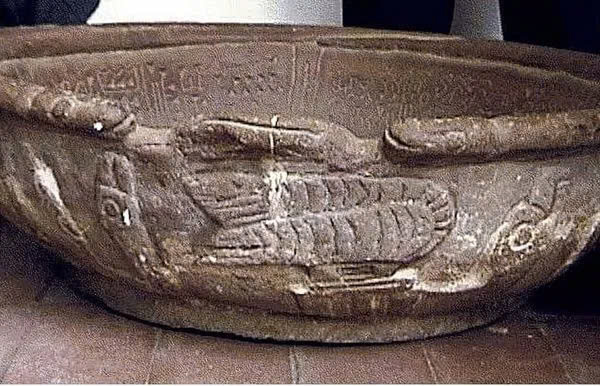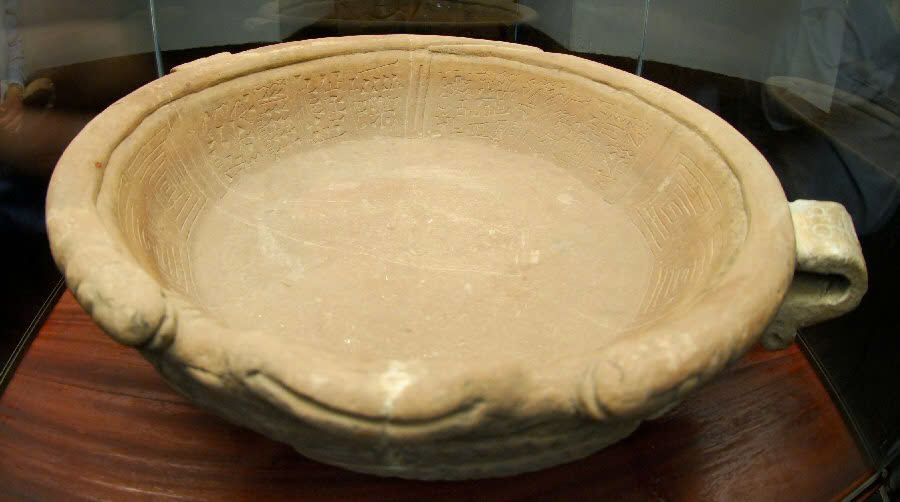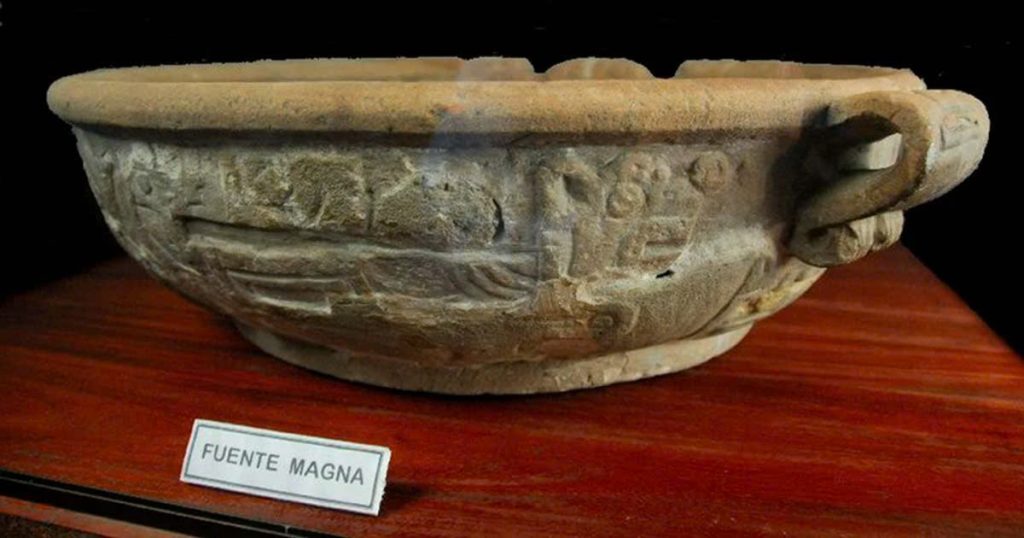In 1950, a Bolivian farmer stumbled upon an artifact that would forever alter our perception of human history. While working near the serene shores of Lake Titicaca, he unearthed an unusual stone basin. This object, initially dismissed as a mundane vessel and repurposed as a pig’s trough, would soon capture the attention of archaeologists and historians around the world. Its extraordinary engravings and mysterious origins would propel it into the heart of archaeological debate and intrigue.
For years, the stone basin’s significance remained unnoticed, blending into the farmer’s daily life. However, closer inspection eventually revealed something extraordinary. Engraved on the interior of the basin were intricate markings resembling cuneiform script. This ancient form of writing, primarily associated with the Sumerians, dates back over 5,000 years and originated thousands of miles away in Mesopotamia, now modern-day Iraq. The discovery of such inscriptions in Bolivia raised profound questions about the interconnectedness of ancient civilizations.

The artifact, now famously known as the “Fuente Magna,” quickly attracted the attention of scholars and archaeologists. Renowned figures like Clyde Ahmed Winters and Bolivian archaeologist Max Portugal Zamora undertook detailed studies of the basin. Their analyses confirmed that the inscriptions bore remarkable similarities to proto-Sumerian script. Moreover, the basin displayed linguistic and stylistic elements that linked it to other ancient languages from distant parts of the world. The implications of these findings ignited debates and fueled a range of fascinating theories.
The presence of proto-Sumerian characters in South America has sparked various hypotheses about how such an artifact could have traveled so far from its place of origin. One compelling theory suggests that ancient navigators from Sundaland, a now-submerged region near Indonesia, may have crossed vast oceans, carrying cultural artifacts like the Fuente Magna to the Americas. Another proposition speculates that the Sumerians themselves possessed advanced seafaring abilities, enabling them to embark on long-distance voyages and establish connections with far-off lands.
These theories challenge the conventional understanding of human history, which often portrays ancient civilizations as relatively isolated from one another. Instead, the Fuente Magna hints at a more complex and interconnected past. If proto-Sumerian script indeed found its way to South America, it suggests that cultural exchange and human migration were far more dynamic and widespread than previously believed.
The implications of this discovery extend beyond linguistic analysis or geographical anomalies. The Fuente Magna invites us to reconsider the narrative of human history. It highlights the ingenuity and exploratory spirit of our ancestors, who may have ventured across oceans, forging connections that transcended continents. This artifact—a humble stone basin—serves as a powerful symbol of humanity’s shared heritage and our capacity for innovation and exploration.
As investigations into the Fuente Magna continue, researchers are delving deeper into its origins and significance. Advanced dating techniques and multidisciplinary studies are being employed to unravel its mysteries. Each new piece of evidence brings us closer to understanding the journey of this extraordinary artifact and the people who created it. The ongoing research not only enriches our knowledge of the Fuente Magna but also opens new avenues for exploring ancient history.
The story of the Fuente Magna underscores the importance of preserving and studying historical artifacts. These relics serve as windows into the past, offering invaluable insights into the lives, beliefs, and achievements of ancient civilizations. They remind us that history is not a static record but a dynamic tapestry woven from countless interconnected threads. By uncovering and interpreting these threads, we gain a deeper appreciation for the complexities of human history and the resilience of the human spirit.
Beyond its archaeological significance, the Fuente Magna has become a source of inspiration for those who seek to challenge conventional wisdom. Its discovery encourages us to question established narratives and remain open to new possibilities. It serves as a testament to the importance of curiosity and the enduring quest for knowledge. In a world where so much remains to be discovered, the Fuente Magna stands as a beacon of hope and a reminder of the endless potential for discovery.

The enigmatic inscriptions on the Fuente Magna also invite reflection on the nature of communication and cultural exchange. Writing is one of humanity’s most profound inventions, a tool that transcends time and space. The appearance of cuneiform-like script in Bolivia suggests that the desire to record and share ideas was a universal aspect of human societies. This shared trait underscores our common humanity and the connections that bind us across time and geography.
As we continue to uncover the secrets of the Fuente Magna, we are reminded of the transformative power of archaeology. Each artifact unearthed from the sands of time has the potential to reshape our understanding of the past. The Fuente Magna is no exception. Its discovery has sparked debates, inspired research, and challenged assumptions, paving the way for a more nuanced and interconnected view of human history.
The journey of the Fuente Magna is far from over. New discoveries and technological advancements hold the promise of shedding further light on its origins and significance. As researchers piece together the puzzle of this remarkable artifact, they contribute to a broader effort to rewrite the story of humanity. Each step forward brings us closer to a fuller understanding of who we are and where we come from.
In reflecting on the story of the Fuente Magna, we are reminded of the importance of embracing the unknown. History is full of mysteries waiting to be solved, and each discovery adds a new chapter to the story of humanity. The Fuente Magna challenges us to look beyond the familiar and explore the extraordinary, to seek out the connections that unite us and celebrate the diversity that defines us.

The Fuente Magna’s legacy is not confined to its inscriptions or its archaeological significance. It represents a bridge between past and present, a tangible link to the ingenuity and curiosity of our ancestors. It stands as a testament to the enduring quest for knowledge and the unyielding spirit of exploration that defines the human experience.
As we delve deeper into the mysteries surrounding relics like the Fuente Magna, we embark on a journey of discovery that pushes the boundaries of conventional wisdom. Each new finding brings us closer to unlocking the secrets buried beneath the sands of time, forever reshaping our understanding of who we are and where we come from.





